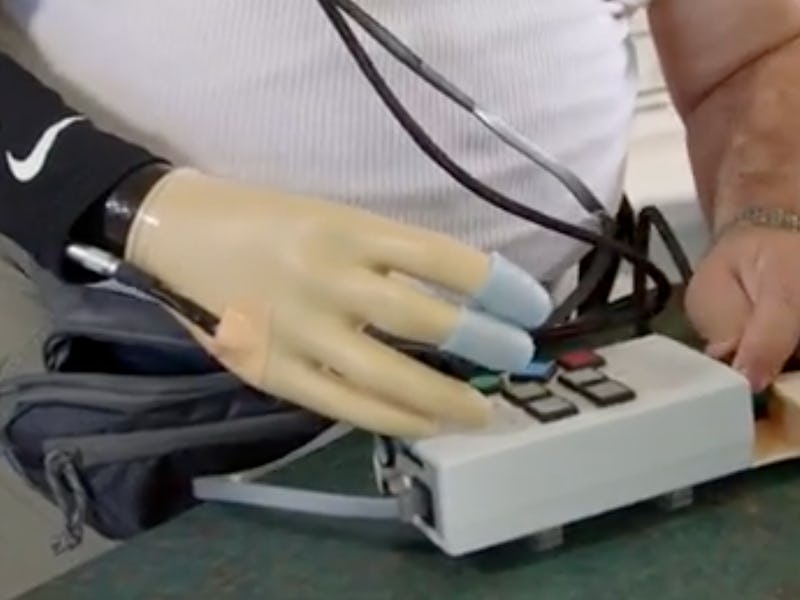Researchers Just Developed a Way for Prosthetic Hands to "Feel"
New research into the sense of touch gives prosthetic hands the ability to feel.

A prosthetic hand can high-five, caress a face, and even interlace its fingers with those of a human. But without the sense of touch, these gestures seem unsatisfying and incomplete. Until now, the full integration of these plastic appendages into the human body has been limited by their inability to feel.
A team of neuroscientists from the University of Chicago and Case Western Reserve University are about to change life for amputees. They’ve figured out a way to turn the pressure “felt” by a prosthetic hand into a signal that feeds directly into the parts of the brain that deal with hand movement and touch.
Publishing their work in the journal Science Translational Medicine on Wednesday, the scientists report that their system allows people fitted with robotic hands not only to sense pressure, but to feel when that pressure becomes more and less intense. Figuring how to bestow the sense of touch to a piece of plastic, they found, was all about trying to understand what touch really is.
In their paper, the authors explain that creating the interface involved understanding the way the brain encodes information about touch in the first place. In other words, they had to learn how to speak the “neural language” of touch. Building on previous studies, showing that higher-pressure sensations translated into more frequent electrical signals being sent via the nerves, from the hand to the brain, they created an array of electrodes that were implanted into the touch-sensing areas of the brain. This, in turn, was hooked up to electrodes attached to the three nerves in the arm that carry signals about touch from the hand to the brain in intact arms.
Electrical stimulation was delivered by an external stimulator (top left) through percutaneous leads to FINEs implanted on the median, ulnar, and radial nerves of an upper-limb amputee (bottom left). Each electrode contact evokes sensory percepts on small regions of the missing hand of the subject.
When the pressure sensors on the prosthetic hand feel a squeeze, it sends signals to a “portable stimulator,” a device that, ostensibly, turns those messages into electrical signals that then travel up the nerves and into the brain. Changing the intensity of those signals, they write, allows the brain to sense different levels of pressure.
They plan to use their newfound tactile capabilities for improving — and expanding — the existing functions of prosthetic hands. The prostheses, while not perfect, are already proving to be much more nimble: One of the subjects tested in their study was able to use his prosthetic hand to shave off hundredths of an inch off a piece of metal, using a lathe — in addition to squeezing a neat line of ketchup, walk a dog on a leash, and pick up fragile eggs without breaking them. Next, the researchers hope to hone their interface so that its integration with the human brain is seamless, allowing amputees to enjoy the sense of touch without a second thought.